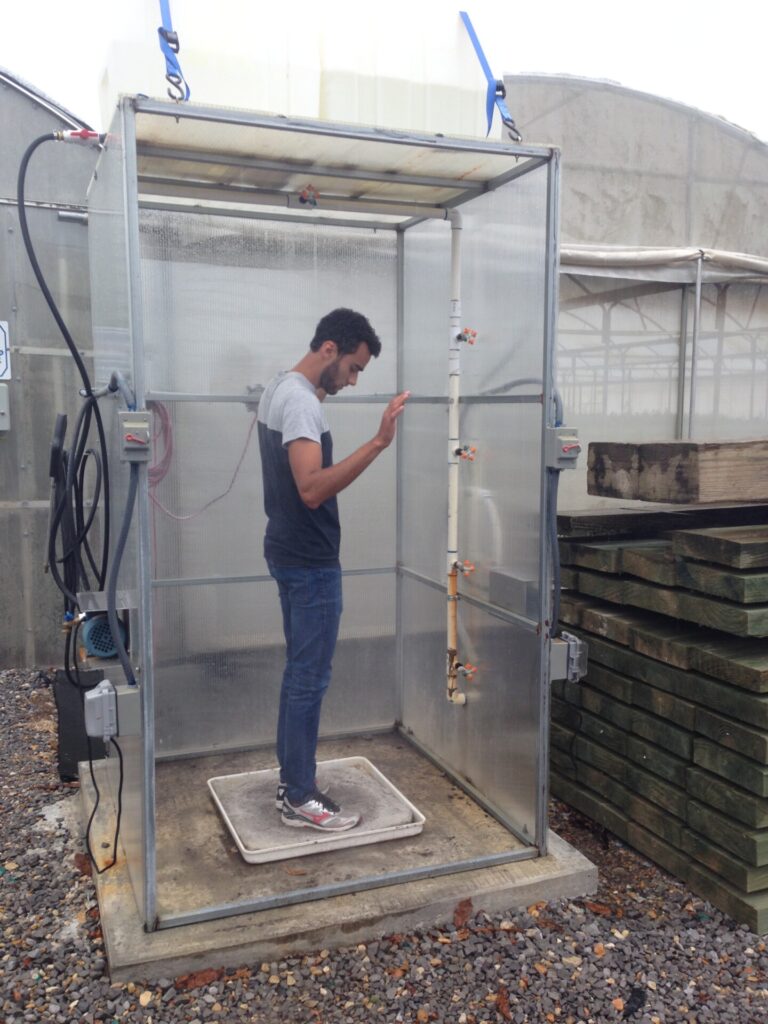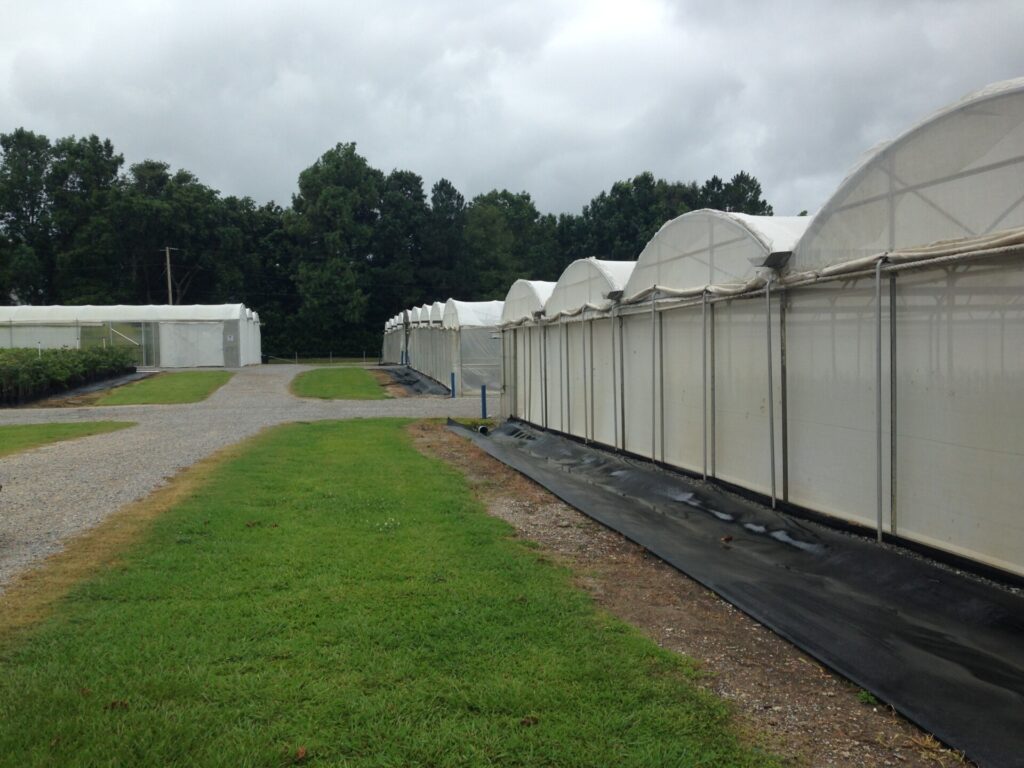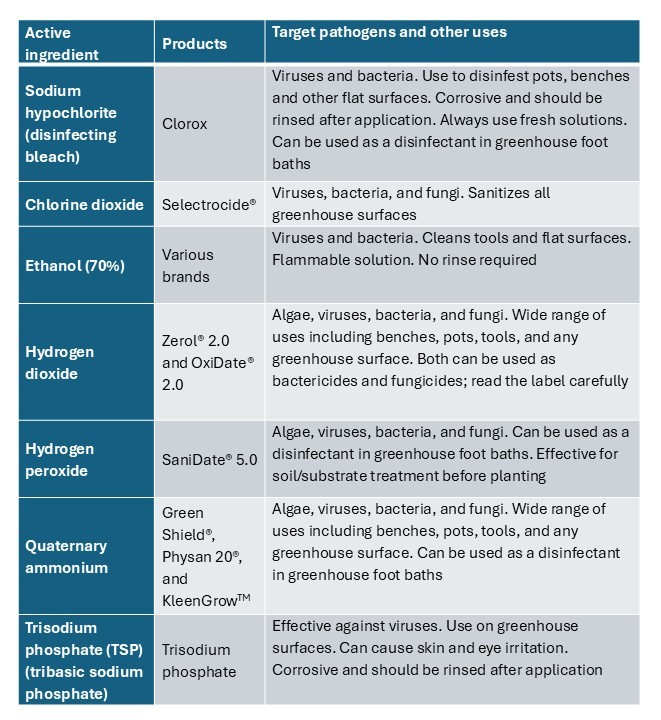Many of you are getting ready to start planting your seeds in the greenhouse, especially if you are planning to transplant. Regardless of the time you start or the type of crop you are planting, it is important to ensure that you have clean and disinfected areas in your greenhouse to prevent disease infections and spread. Preventing disease from the beginning (seedling stage) helps you have healthy material for transplanting. In many cases, seedlings are infected with disease in the greenhouse but are asymptomatic, and disease expression starts after transplanting in the field when conditions are suitable for disease development.
In this article, I discuss common practices to prevent pathogen infection and disease spread in your greenhouse. I recommend having a sanitation protocol that you can implement before planting, during the seedling growing season, and between crop cycles in the greenhouse. The success in keeping your greenhouse clean of pathogens depends on how well you follow the cleaning and sanitation practices at each of these stages. Furthermore, performing cleaning practices at each of these steps will make the entire process more effective and less time-consuming.
Before planting
A few days before planting, you should sanitize the equipment and areas where you will be placing your seedlings (i.e., benches, seedling trays, pots, planting tools, etc.). At this step, you can use sanitation products that are commercially available, such as sodium hypochlorite, hydrogen peroxide, hydrogen dioxide, quaternary ammonium, isopropyl alcohol, and trisodium phosphate (Table 1). All these products are intended to be used for the elimination of pathogenic microorganisms such as fungi, bacteria, and viruses. Please visit the selected references listed below to obtain more details about how to use each of these products. Be aware that the effectiveness of the sanitation products is higher when you have clean areas, meaning areas that are free of soil, debris, or any other type of organic matter. Usually, new tools or equipment don’t need disinfection.
Table 1. Disinfectant products for greenhouse use and pathogen targets.
Seedling growing season in the greenhouse
Restrict personnel entrance and establish protocols that enforce the use of clean shoes and clothing. Restrict entrance to the greenhouse to personnel who have been performing any activities in the field. Pathogens can be easily moved from the field to the greenhouse on shoes and clothing surfaces. A strict protocol with two basic steps can be established before entering the greenhouse. First, shoes should be cleaned with water and soap, and second, the person should step in a foot bath containing a disinfectant solution to eliminate potential pathogens that could be spread in the greenhouse (Figure 1). Remove any diseased or infected tissue from the greenhouse, regularly clean floors and benches, and always keep the surroundings of the greenhouse free of weeds as they can host plant pathogens that can be easily carried inside the greenhouse. In some cases, inorganic mulches (i.e., stone, gravel, or plastic) are used as weed barriers outside or inside the structure (Figure 2).

Figure 1. A disinfection bath with foot bath in a nursery greenhouse. Refer to Table 1 to see what products can be used as disinfectant solutions. (Photo by Cesar Escalante).

Figure 2. Inorganic mulch (plastic) is used in nursery greenhouses to prevent weed growth in the surrounding areas. (Photo by Cesar Escalante).
Between crop cycles
Remove all plant debris from the greenhouse and prepare for the next season by cleaning benches, tools, and other utensils. Remove potting mix, soil, and any organic matter residue on greenhouse surfaces right after the planting season ends. Waiting until the next planting season will make it harder to remove the organic matter, and therefore, any disinfection procedure will not be effective. At this point, you can decide to use disinfectant products or wait to do this task near the start of the planting season (see “Before planting” section).
Remember, producing “clean” plants in the greenhouse is crucial to having healthy crops in the field. Protecting the plants during the early stages of development is important because, in many cases, plants don’t recover if they get infected by an aggressive pathogen.
Selected references
Kleczewski and Egel. 2011. Sanitation for disease and pest management. Purdue Extension publication HO-250-W. https://edustore.purdue.edu/ho-250-w.html
Vegetables by Bayer. 2023. Greenhouse sanitation. Publication No. 5010_290550. https://www.vegetables.bayer.com/us/en-us/resources/growing-tips-and-innovation-articles/cultivation-insights/greenhouse-sanitation.html
